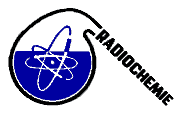Speaker
Dr
Maria José Madruga
(Nuclear and Technological Institute (ITN), Portugal)
Description
Safety assessment of low and intermediate level waste repositories requires the understanding of radionuclides sorption-desorption mechanisms, mainly the degree of interaction between radionuclides and mineral surfaces with the aim to analyse processes that can affect the safety of the repository at both near and far-field zones. Among the different radionuclides that are part of the radwastes’ inventory produced by industrial, medical, teaching and research activities carried out in Portugal, 137Cs is one of the most important from the radiological point of view due to its half-live (30 years) and high radiotoxicity. The clay component of natural geomaterials named rañas, originated from an area located in the NE Mainland of Portugal, were studied for their potential as effective barriers to avoid or reduce the impact of radionuclides migration. Characterization of these geomaterials is the first step towards identification of the adsorption/desorption mechanisms involved. Cationic exchange capacity (CEC), specific adsorption capacity on frayed edge sites (FES), and radiocaesium interception potential (RIP) for potassium ion, using gamma spectrometry were determined for three selected grains-size fractions (< 63µm, <36µm and <20µm). Organic content and pH were also determined. The selected fractions were mineralogical analysed by X-ray diffraction and by Instrumental Neutron Activation Analysis for chemical elemental composition. Smectite, illite and chlorite-smectite mixed-layers were identified in the clay fractions analysed. The overall values obtained for CEC ranged from 184.9±11.7 to 349.5±22.1 mmol kg-1, while FES values were scattered between 0.55±0.06 and 1.55±0.16 mmol kg-1. The RIP values, defined by a clear plateau at higher potassium concentrations, varied from 1.77 ± 0.05 mmol kg-1 to 2.90 ± 0.11 mmol kg-1. However, these values are clearly overestimated since they are 3 to 8 times higher than the correspondent exchangeable RIP values. A possible explanation for this deviation could be the fixation of caesium in non-specific sites during the procedure. The ionic capacity of FES is related to the sample granulometry. The values obtained for the FES were shown to decrease for higher grain-size fractions. Also, the presence or absence of an expanded mixed-layer (hydrous) phyllosilicates (i.e., one-or two-layers smectite) in the fractions analysed was found to increase or decrease the radiocaesium adsorption. Preliminary results concerning the characterization of these specific geomaterials with regard to the behaviour of radiocaesium are very promising in terms of a possible application as lining materials in a hypothetic LILW repository. Further studies involving the sorption, fixation and selective coefficients onto clay minerals related to rãna deposits, are currently under progress.
Primary authors
Ms
Eva Andrade
(Nuclear and Technological Institute (ITN), Portugal)
Dr
Maria José Madruga
(Nuclear and Technological Institute (ITN), Portugal)
Co-authors
Prof.
António Mateus
(Faculty of Sciences/University of Lisbon, Portugal)
Ms
Flávia Maia
(Faculty of Sciences/University of Lisbon, Portugal)
Dr
Isabel Paiva
(Nuclear and Technological Institute (ITN), Portugal)
Dr
Iuliu Bobos
(Faculty of Sciences/University of Oporto, Portugal)
Dr
Maria do Carmo Freitas
(Nuclear and Technological Institute (ITN), Portugal)
Dr
Mário Abel Gonçalves
(Faculty of Sciences/University of Lisbon, Portugal)
Dr
Romão Trindade
(Nuclear and Technological Institute (ITN), Portugal)

